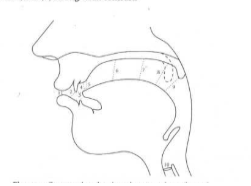Het arrangement Introduction to phonetics is gemaakt met Wikiwijs van Kennisnet. Wikiwijs is hét onderwijsplatform waar je leermiddelen zoekt, maakt en deelt.
- Auteur
- Laatst gewijzigd
- 25-01-2019 12:29:37
- Licentie
-
Dit lesmateriaal is gepubliceerd onder de Creative Commons Naamsvermelding 4.0 Internationale licentie. Dit houdt in dat je onder de voorwaarde van naamsvermelding vrij bent om:
- het werk te delen - te kopiëren, te verspreiden en door te geven via elk medium of bestandsformaat
- het werk te bewerken - te remixen, te veranderen en afgeleide werken te maken
- voor alle doeleinden, inclusief commerciële doeleinden.
Meer informatie over de CC Naamsvermelding 4.0 Internationale licentie.
Information used on pages comes from Sounding Better: A Practical Guide to English Pronunciation for Speakers of Dutch, Beverley Collins, S.P. den Hollander, Inger M. Mees & Jill Rodd, Wlavaboek 2014.
Aanvullende informatie over dit lesmateriaal
Van dit lesmateriaal is de volgende aanvullende informatie beschikbaar:
- Toelichting
- An ESL introduction to phonetics and how to apply them as start of a lesson series.
- Eindgebruiker
- leerling/student
- Moeilijkheidsgraad
- gemiddeld
- Studiebelasting
- 4 uur 0 minuten
- Trefwoorden
- articulation, esl, phonetics
Bronnen
| Bron | Type |
|---|---|
|
Intro https://youtu.be/JLcz4fsO9CA?hd=1 |
Video |
|
Phonemes https://youtu.be/OwNABV07K1s?hd=1 |
Video |
|
Remedial https://youtu.be/Ydg6X1bOjsg |
Video |


